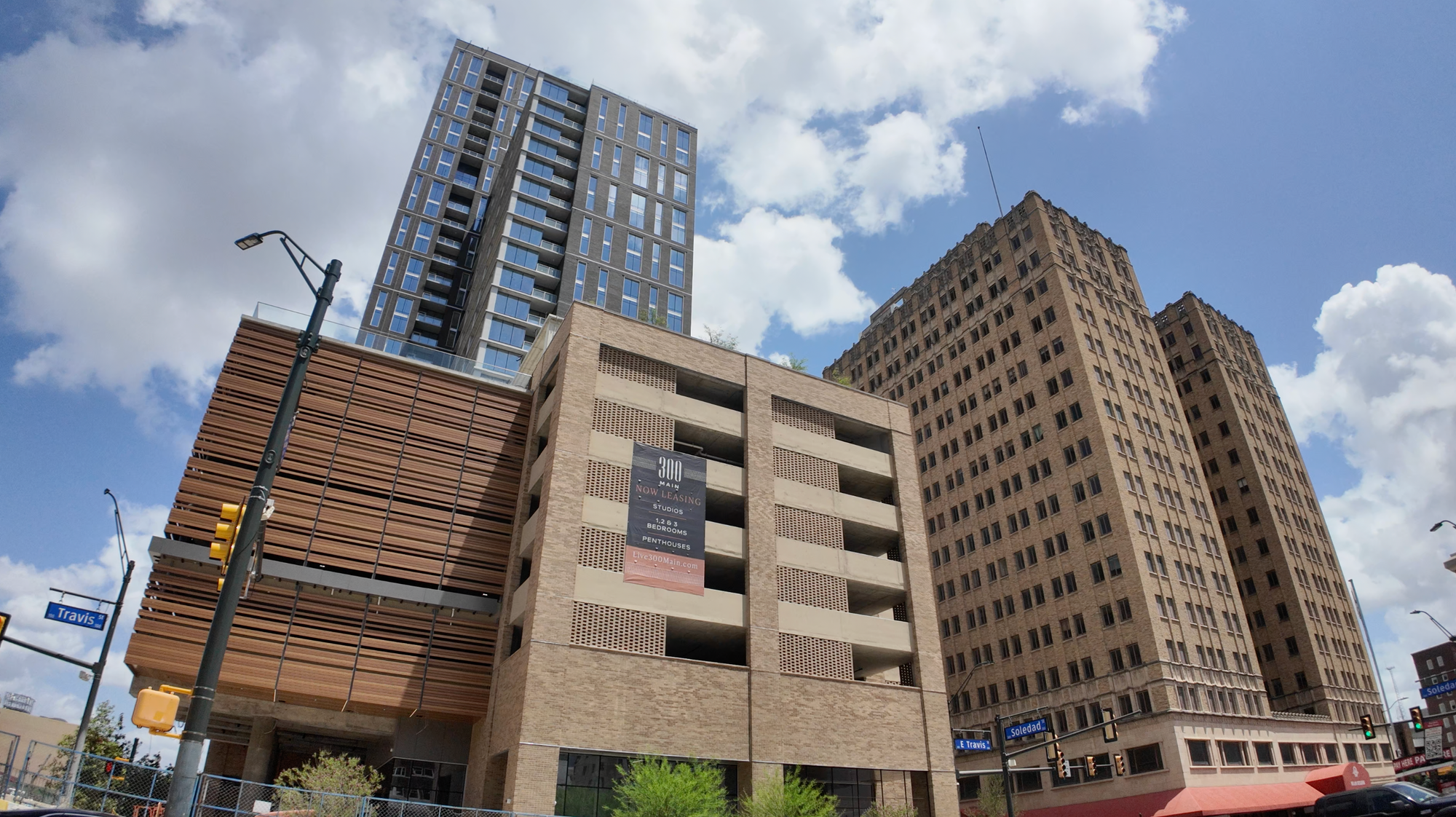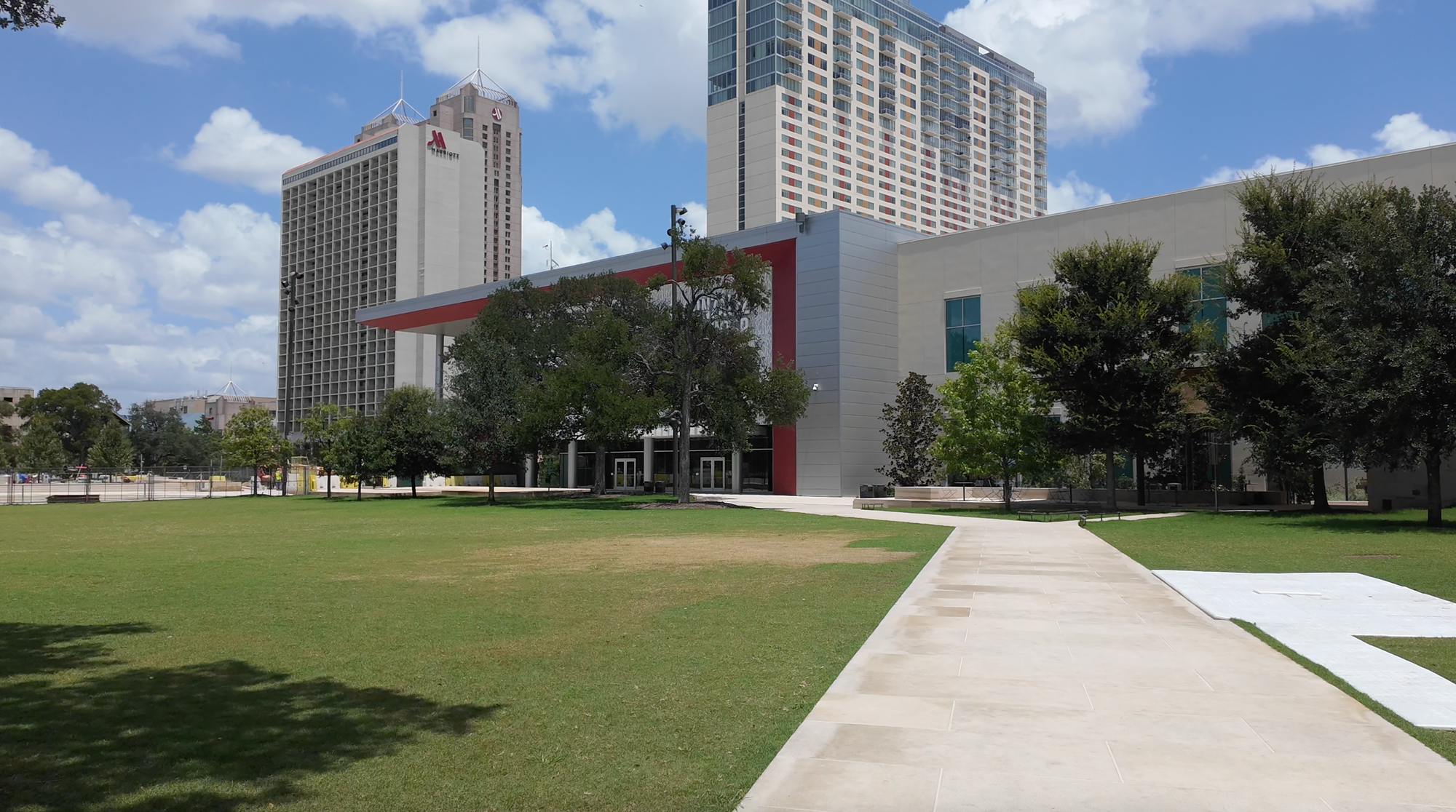While I couldn’t attend the recent panel on the future of downtown San Antonio at the San Antonio Report's City Fest, I promptly tuned in to the recording published soon after and wanted to share some key themes from the conversation.
This discussion, also recorded live for the BigCitySmallTown podcast, gathered a powerhouse panel of local leaders who are shaping downtown’s trajectory in profound ways. A friend of mine, Bob Rivard, BigCitySmallTown Host, guided the conversation with signature insight, drawing out themes that offer a clear picture of where our city might head.
From collaborative investments to an increased focus on resident-centered development, the panel highlighted a shared vision for San Antonio—one that balances growth with cultural integrity and accessibility. For anyone interested in our city’s future, these are valuable themes to consider as downtown evolves. Here’s a look at the conversation’s most significant takeaways.
The panel discussion (moderated by Bob Rivard) featured the following participants:
• Veronica Salazar: Chief Enterprise Development Officer at the University of Texas at San Antonio (UTSA).
• David Robinson Jr.: Development Manager at Weston Urban.
• Trish DeBerry: President and CEO of Centro San Antonio.
• Erik Walsh: City Manager of San Antonio.
• Andres Andujar: President and CEO of Hemisfair.
celebrating the people who make San Antonio go and grow.
Tune in for a new episode every Monday wherever you listen to podcasts.
Collaboration as the Catalyst for Downtown’s Growth
Collaboration was emphasized as perhaps the driving force for the future of San Antonio’s downtown.
City Manager Erik Walsh highlighted the unique synergy between public and private sectors, explaining, “There’s a lot of collaboration and a lot of momentum from public sector entities [and] the private sector… Everybody wants to be part of the winning team.”
Trish DeBerry, CEO of Centro San Antonio, echoed this sentiment, saying, “I have never seen…the kind of partnership that we have with all of the entities creating energy and an ecosystem to, excuse my French, get shit done.” Her remark captured the excitement and urgency felt by many leaders invested in transforming downtown.
This combined approach, unique perhaps to San Antonio, means that public and private projects aren’t developing in silos but hopefully, with shared goals and resources.
Educational & Cultural Expansions Led by UTSA
UTSA’s expansion was presented as a major driver of downtown’s evolution. Veronica Salazar, UTSA’s Chief Enterprise Development Officer, described the university’s role as transformative, stating, “We want to reign the economic development that the city and all of our citizens…deserve.”
Salazar outlined how new facilities in data science, AI, and cybersecurity, alongside the ambitious goal of adding 10,000 students downtown by 2028, are positioned to boost San Antonio’s talent pool and attract tech industry investments.
UTSA’s acquisition of One Riverwalk, an iconic 18-story building, is set to bring the university’s architecture program downtown, where students can interact with professionals from neighboring firms. Salazar shared, “Imagine that tall structure…bringing the College of Architecture…[and] architectural firms…creating synergy for our students.”
This growth is complemented by the merger with UT Health, positioning San Antonio as a research and healthcare hub. “We are going to become members of the American Association of Universities…the opportunities are endless for us to continue to grow,” Salazar added.

Building a Resident-Centric Downtown Through Increased Housing Density
A central theme of the discussion was the need for a substantial residential presence to create a vibrant downtown.
David Robinson Jr. of Weston Urban shared his personal journey, moving back to San Antonio and realizing the potential for a livable, resident-driven downtown. He pointed out that San Antonio’s downtown is shifting from office-dominated spaces to a lifestyle-oriented community where people can live and work.
To achieve this, Robinson explained that Weston Urban aims to add thousands of housing units, creating a foundation for sustainable growth. “We need to build as much housing as possible,” he said, citing projects like the Continental Hotel redevelopment, which will include over 300 mixed-income units.
This project, along with similar developments (e.g. 300 Main), is essential for what Robinson calls “activation”—adding residents who use local amenities and help drive demand for services year-round.
Activating Public Spaces to Build a Lively Downtown
Andres Andujar, CEO of Hemisfair, provided insight into the ongoing transformation of Hemisfair as a multi-use public space that balances regular events with daily activities.

He discussed the recent Muertos Fest, which drew over 120,000 attendees to Civic Park: “I’ve never seen something like that at Hemisphere…it was all laughter, no hatred…a good, healthy experience.”
Andujar emphasized that the design of Civic Park aims to support both “event life and daily life,” creating a year-round destination.
This vision for a resident-friendly space is reinforced by tenant businesses like Bombay Bicycle Club and Paleteria, which cater to both festival-goers and regular park users. The completion of Phase 2 of Civic Park, anticipated in early 2025, will be a major milestone, establishing the area as a dynamic venue in time for the NCAA Final Four.
Infrastructure to Support Growth and Accessibility
The city’s infrastructure upgrades are integral to supporting an expanding, connected downtown.
David Robinson Jr. underscored the importance of the Advanced Rapid Transit (ART) system, which aims to extend downtown’s reach across the city, especially to neighborhoods like the East and West Sides. “With Advanced Rapid Transit, we’re really stretching the reach of what it means to be connected to downtown,” he explained, adding that this could help lay the groundwork for future transit projects, such as light rail.
In addition to ART, there are plans for continued upgrades to major venues like the Alamodome and the Convention Center, keeping San Antonio competitive for hosting major events. Walsh acknowledged, “We’re going to have to make an investment [in these facilities]…it’s critical.”
These improvements will accommodate a growing number of visitors and events, ensuring that the downtown area can handle both local needs and tourism demands.
Diverse, Accessible Housing to Ensure Inclusive Growth
Ensuring downtown housing accessibility was another priority. Robinson pointed out that Weston Urban’s 300 Main project achieved “nine times the density” compared to the 1970s-era Soap Factory apartments, indicating that higher-density projects will increase housing supply and make affordable options more feasible.
Projects like the Continental Hotel will include units for residents at 60-80% of the area median income (AMI), catering to a broader range of income levels.
DeBerry added that housing diversity is essential for creating a neighborhood-like feel, as she explained, “Downtown should be for everybody.”
Balancing Development with Cultural Identity
A theme resonating throughout the panel was the importance of maintaining San Antonio’s unique cultural identity amidst rapid urban development.
Hemisfair CEO Andres Andujar pointed to other cities (like Austin) as cautionary tales: “We’re too proud of [our cultural identity] to just let it go by virtue of putting a lot of development in place.”
He stressed that while growth is essential, it must be pursued thoughtfully to ensure that San Antonio doesn’t lose the character that makes it special.
David Robinson Jr. echoed this, discussing how Weston Urban aims to keep local stakeholders involved in downtown’s future to avoid the pitfalls of homogenization. He highlighted that if development were dominated by outside capital and developers, San Antonio could risk losing its authenticity and community focus. “When you start having a lot of external developers come in, that’s when you’re really at risk of losing [your culture],” Robinson warned. He advocated for a balance between welcoming outside investments and prioritizing local voices, explaining that local developers “live here… it’s just going to have a different tone” than purely profit-driven projects by non-local entities.
Veronica Salazar discussed how UTSA’s downtown expansions incorporate cultural elements, such as the Southwest School of Art, which connects education with San Antonio’s artistic heritage. She explained, “We want to bring…community programs…being part of the arts community here,” which aligns the university’s growth with the city’s cultural fabric.
Additionally, Hemisfair’s design encourages the integration of cultural experiences within its public spaces. Andujar described Hemisfair’s vision of becoming the “front porch of San Antonio,” a place for people from all walks of life to gather and celebrate the city’s unique traditions. By maintaining public areas like Civic Park as spaces for both daily life and large community events, Hemisfair seeks to blend modern development with San Antonio’s rich heritage.
A Downtown For Everyone
The panel discussion on downtown San Antonio’s future covered some of the most prominent plans currently shaping our city’s core.
From the ambitious UTSA expansions set to bring thousands of students downtown, to proposed high-density housing developments aimed at fostering a resident-centered community, the conversation highlighted a range of active projects on the horizon. Leaders also touched on the potential impacts of new public spaces like Hemisfair’s Civic Park, which is being designed to serve both daily life and large events.
While these plans reflect a coordinated vision for growth, we must remain vigilant as these projects evolve. As these initiatives unfold, we must stay attuned to how they impact our community’s livability, cultural identity, and affordability. This was an insightful conversation about the possibilities for downtown, but it deserves our ongoing attention as these plans come to life in our city.
Not everyone defines progress the same.

